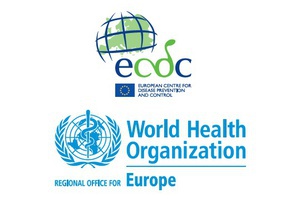The untold story: New report reveals 7,000 additional TB deaths during COVID-19 pandemic
Nearly 7,000 excess deaths from TB occurred in the WHO European Region in the three years of the pandemic from 2020-2022, compared to what experts had expected based on pre-2020 estimates.
Nearly 7,000 excess deaths from tuberculosis occurred in the WHO European Region in the three years of the pandemic from 2020 - 2022, compared to what experts had expected based on pre-2020 estimates. This increased mortality was a direct result of the pandemic and would not have occurred if TB diagnosis and treatment efforts had not been disrupted during the pandemic.
This sobering revelation comes via the latest TB surveillance and monitoring report from the WHO Regional Office for Europe and the European Centre for Disease Prevention and Control (ECDC). The report highlights the most recent data, showing a region recovering from, but still experiencing the impact of the COVID-19 pandemic on TB testing, diagnosis and care.
The WHO/Europe-ECDC report is released annually in anticipation of World TB Day, which takes place on 24th March 2024.
“Our latest report reveals a heart-breaking, entirely preventable situation - people affected by TB were not protected during the pandemic and 7,000 needlessly lost their lives because of disruptions to TB services,” said Dr Hans Henri P. Kluge, Regional Director at WHO/Europe. “The report also reveals another evolving, preventable tragedy - the prevalence of drug resistant TB continues to rise. We urge national authorities to strengthen TB testing programmes, diagnose promptly and apply the latest WHO guidelines.”
According to ECDC Director, Dr Andrea Ammon, “In the aftermath of the COVID-19 pandemic we still have a long road ahead of us for meeting the TB elimination targets. Timely strengthening prevention, testing and treatment are key elements in fighting TB and any delays are translated in further suffering and death. Countries must act now, and ECDC remains committed to partnering with and supporting EU/EEA countries in their efforts to end the TB epidemic.”
Cases reported
Reported data show increased numbers of diagnoses compared to the previous year. In 2022, 38 out of 53 WHO/Europe Member States reported increased TB notifications. The overall total number reached more than 170 000 cases (from over 166 000 cases in 2021), out of which over 36 000 cases were reported in the EU/EEA (from more than 33 500 in 2021).
These increased numbers are likely to be a positive indication that, in many countries, TB services are now recovering from the disruptions of the COVID-19 pandemic and more people are being diagnosed and treated. It is also likely to reflect the Region catching up on delayed diagnoses due to pandemic-related disruptions.
Drug-resistant TB and treatment success rates
Worryingly, on average only 6 out of 10 TB treatments using first-line medicines were successful in curing the infection in the EU/EEA countries, while overall in the European region 7 out of 10 TB treatments cured the patients’ infection. These are the lowest rates in a decade, indicating possible issues with treatment compliance and likely gaps in monitoring of treatment outcomes. If properly planned and carried out, TB treatment should be successful in roughly 9 out of 10 patients infected with strains that respond to the antibiotics rifampicin and isoniazid.
Also of concern are signs that the management of TB and HIV co-infection is suboptimal. Only 48% of patients with both TB and HIV in the WHO European Region and 54% in the EU/EEA who started TB treatment in 2021 had been cured.
To fast-track efforts to reach the end TB targets, WHO and ECDC recommend: scaling up efforts to actively find and treat missing cases of TB by strengthening TB testing, making preventive treatment options available to all those who need them; and full implementation of up-to-date, short and fully oral treatment regimens.
HIV prevalence in TB cases
In 2022, HIV prevalence in incident TB cases was estimated to be 12%, with an estimated 28 000 cases of co-infection in the Region. In the EU/EEA, there were 13 436 TB cases with known HIV status, almost 4% of which were reported as HIV-positive. Available data show that one in five people with HIV/TB co-infection in the European Region were not receiving antiretroviral therapy (ART) at all. However, the picture is far from complete; only 20 countries provided information on the uptake of ART for HIV among TB patients and only three of these were in the EU/EEA.
Continued efforts are needed to improve the reporting of HIV co-infection.
We can End TB
Monitoring progress towards the targets of the new Tuberculosis action plan for the WHO European Region 2023-2030 is challenging due to limited or no reporting on some indicators. Only 20 out of 30 indicators described in the action plan were monitored and evaluated using routine surveillance data. There is a clear need for all countries in the Region, including from the EU/EEA, to focus on improving data, making it more representative and complete, and using different sources to complement existing surveillance information.
Tuberculosis surveillance and monitoring in Europe 2024 - 2022 data
More information:
Digital report: Ending tuberculosis - Yes we can!
UN: High Level meeting on the fight against tuberculosis 2023
WHO: Tuberculosis Action Plan for the WHO European Region 2023–2030
World Tuberculosis Day 2024: Latest news and reports
Source: ECDC


